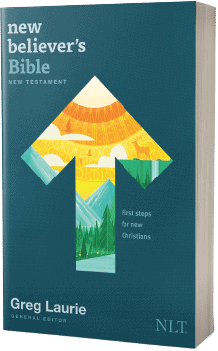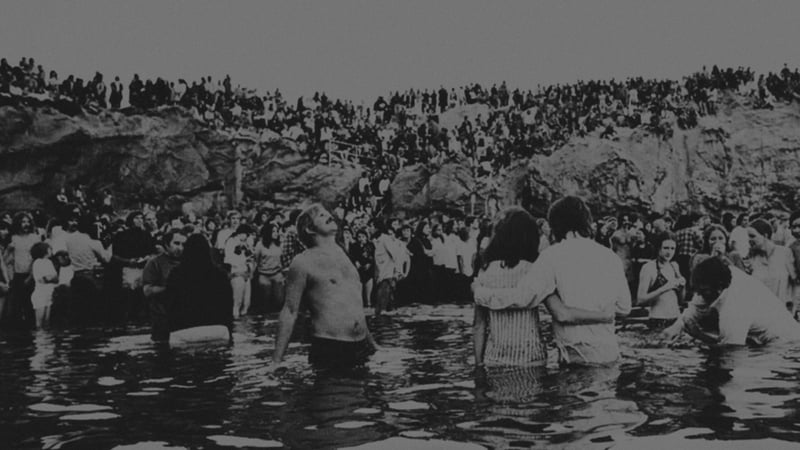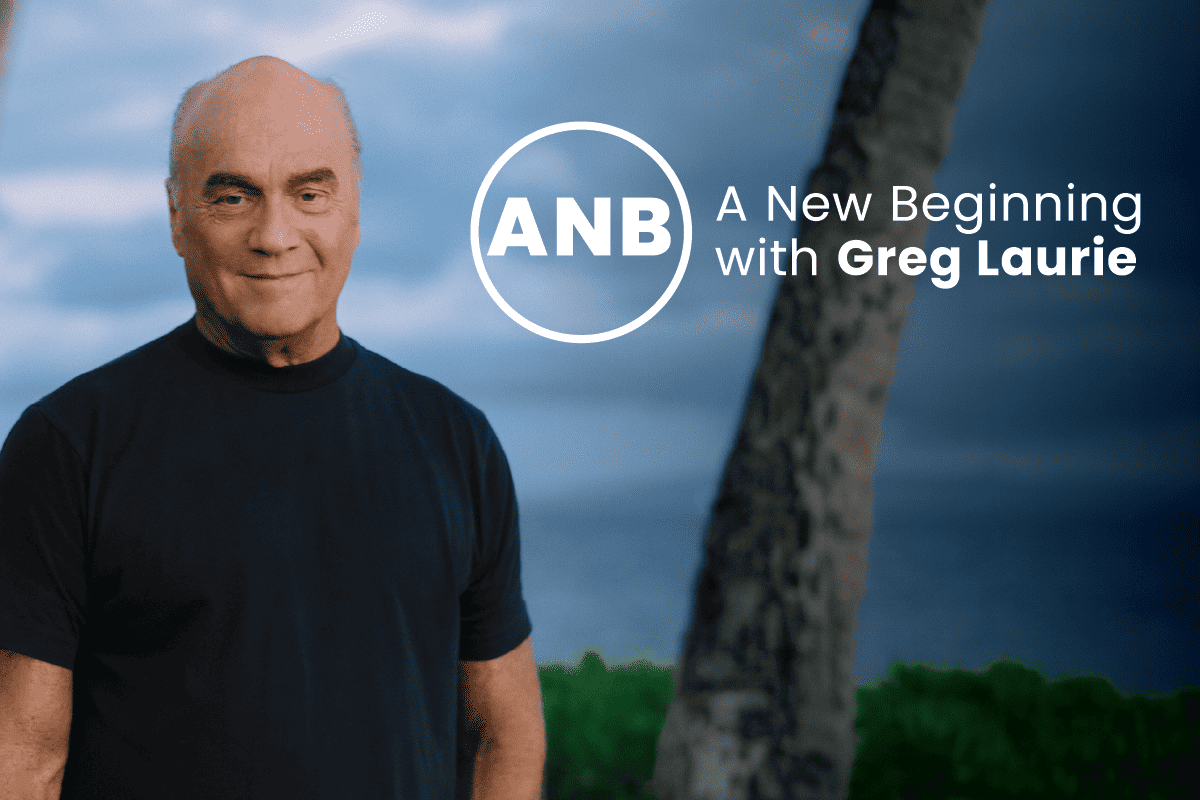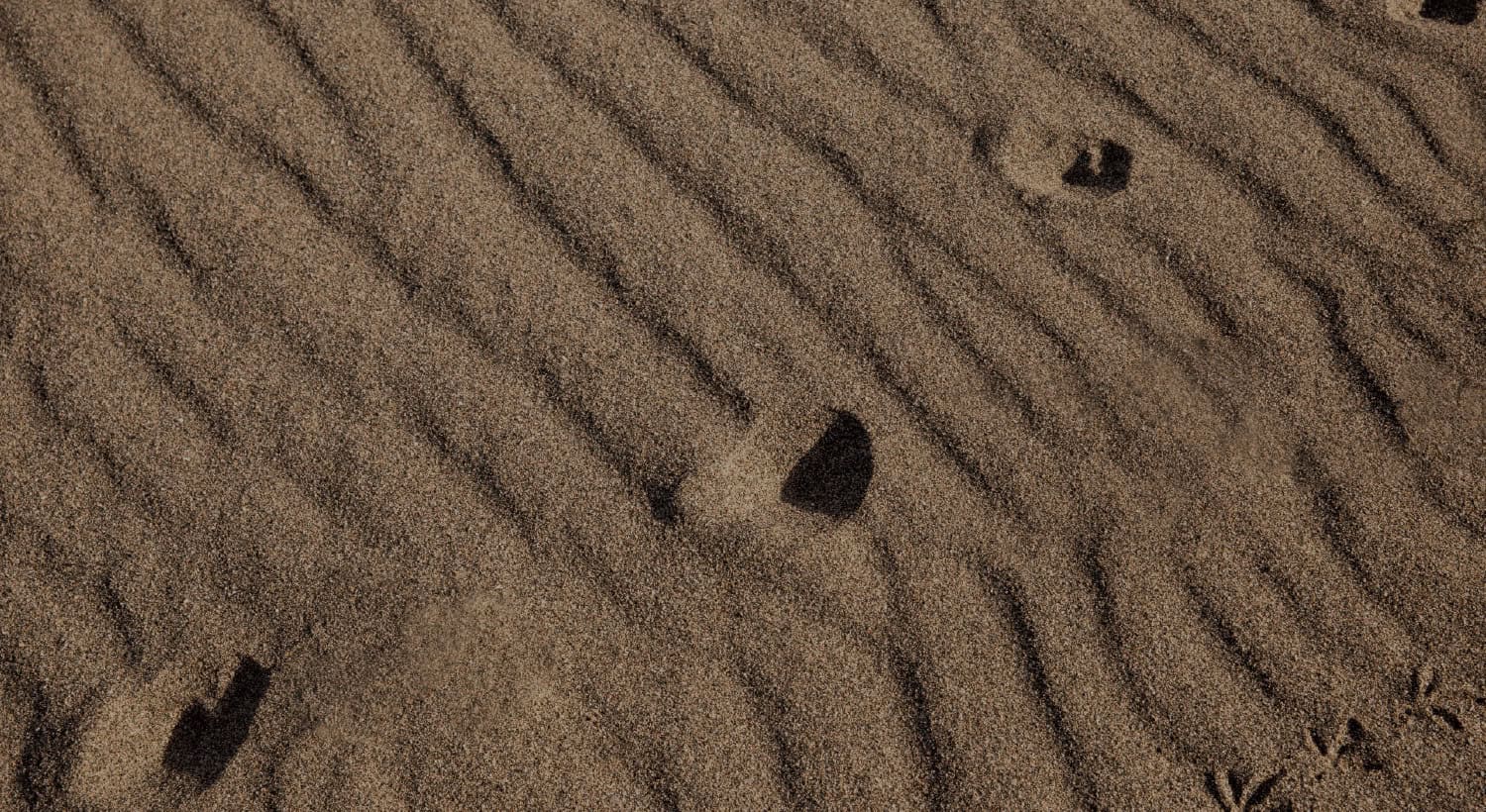My True Story and the Beginning of Jesus Revolution
Several years ago, director Jon Erwin saw the June 21, 1971 issue of TIME magazine featuring the headline “Jesus Revolution” on the cover. After reading the article and learning I had a front row seat to what historians have called “The Last Great Awakening,” Jon sought me out.
At the time of our initial meeting, Jon Erwin wasn’t Jon Erwin—a celebrated film director, screenwriter, and producer. He was only beginning an illustrious career that would include Woodlawn, I Can Only Imagine, I Still Believe, American Underdog, and Steve McQueen: American Icon. I had no idea who Jon was at the time. A mutual friend said Jon simply wanted to meet someone who was around for the Jesus Movement days.
I got the sense that it was going to be one of those “What were the good ol’ days like?” types of conversation and, frankly, that didn’t appeal much to me. I don’t like to live in the past, I barely am in the present because I’m always looking to the future. While I understand the significance of the Jesus Movement, and it is an interesting story, I didn’t necessarily see the point in just reminiscing about something that happened almost half a century ago.
But, I agreed to talk with him. Jon and I met for lunch at Houston’s in Irvine, California. He showed up at the appointed time, and he was younger than I had expected—a millennial—but truly wise beyond his years, as it turned out.
After we shook hands, he took a seat across from me at the table. After I recommended their exceptional house burger to Jon, I asked what I could do for him. He opened his satchel, pulled out a magazine, and gently slid it in my direction. It was the TIME magazine.
“I wanna make this into a movie,” Jon said.
My eyebrows slightly arched, then I looked up at him and our eyes truly met for the first time. A three hour conversation ensued.
I told him this all started at Calvary Chapel in Costa Mesa, California in the cauldron of the 1960s.
An Overview of the 1960s
Allow me to give a brief overview of that tumultuous but wonderful decade for those who weren’t there; or if you were there, some might have a dulled memory due to time and certain illegal substances. In short, it was a time of extremes. Nobody did anything halfway, whether in protesting the Vietnam War, marching for Civil Rights, or lying stoned in a muddy field at Woodstock with thousands of blissed-out people. Long hair and Bohemian frocks were the haute couture of the day. We thumbed our noses at “the man” and thumbed our way around the country.
Even though the war dominated the headlines that decade, it started with a lot of hope. President John F. Kennedy declared America’s “New Frontier” would include eliminating injustice, inequality, tyranny, and even sending a man to the moon. His elegant wife, Jackie, and their children, Carolyn and John, were at his side as he arrived in Washington, D.C., creating both a political and cultural moment. The youth of our country felt hopeful about the future. But on November 22, 1963 in Dallas, Texas, an assassin’s bullet violently terminated this burgeoning dream. The nation was undone. The relatively peaceful years of Eisenhower and Kennedy were gone.
Kennedy’s death coincided with endless battles on foreign soil, civil unrest amidst systemic racism, and an emerging counterculture. Student activists grew more vocal, idolizing and following Martin Luther King Jr. and Robert Kennedy as heroes to be emulated. These peaceful figures also ended up being killed by extremists.
Optimism seemed to be equally dead. The war intensified, growing bigger and worse every year. Planes delivered the bodies of hundreds of G.I.s back to our shores, but thousands more were being shipped out in the other direction to take their place. And their sacrifice was met with derision, adding insult to injury and further dividing the country. Soon, no one could ignore the question of whether this was justified. The cost was impossible to ignore.
Mirroring the war was violence at home, even at the dinner table where parents wanting to cling to the domestic bliss of the 1950s fought with their children who longed for a new era free of injustice. By the end of the 1960s, some of the hippies and radicals, no longer satisfied with marching, sit-ins, and protests, began bombing. Between 1971 and 1972 there were 2,500 bombings—almost five per day—of churches, campus ROTC buildings, federal buildings, court complexes, police headquarters, and airports. In March 1971, the radical leftist group, The Weather Underground, protesting the U.S. invasion of Laos, set off a device in the U.S. Capitol. No building or entity was off limits. Drug experimentation took a darker turn as well, moving from marijuana and LSD to heroin, morphine, and speed . . . a shift that caused real damage to our generation.
In many ways, I think our country was going through a lot of growing pains. Change was necessary in many ways, but that brought with it some undesired results. We saw it happening across our country in our popular culture, our government, and our homes. So, it was no surprise the same evolution would emerge in religious communities as well. Calvary Chapel was the unsuspecting nexus for that change.
A Jesus Revolution Emerges
Outside of the bubble of Orange County, California, no one knew that a small but powerful revolution was taking hold through the unlikely pairing of Chuck Smith and Lonnie Frisbee. These two were as opposite as oil and water or peanut butter and jelly—a pairing that no one expected to blend. But they were more like nitro and glycerin in the explosive combination they created.
Suddenly, droves of barefooted and Jesus-sandaled hippies, reeking of patchouli and sporting tie-dye shirts and bell bottoms, began filing into Chuck’s Wednesday night services, causing quite a stir with his older, conservative congregation. Some of these interlopers sat cross-legged in the aisles, while others occupied the entire front row.
They were not a shy bunch but they were serious about their Christian faith and didn’t play games when it came to religion or their faith. They hungered for God’s word, and those Wednesday nights became a spiritual sanctuary for these “Jesus Freaks.”
These hippies were bringing a new message at these services free of fire and brimstone, finger pointing, and heavy guilt trips. They preached forgiveness through the blood of Christ . . . and there was the music. Oh, what music!
Calvary Chapel not only drew new Christians from the beach cities and other places, but it also launched new bands. At least a dozen new acts sprouted from the church, including Love Song, the seminal group of the genre.
These bands performed almost nightly at Calvary Chapel for free as an expression of their creativity, an extension of their faith, and their own form of ministry. The traditional hymns played on a Hammond and Gospel choruses plunked out on a spinet were quickly becoming the echoes of a bygone era and a new sound of worship was resonating.
Modern melodies produced on acoustic guitars, drums, and tambourines filled the church and the hearts of these people. That moment was christened the birth of modern day worship and praise music. Eventually, mainstream church slowly adopted this change, and guitars, drums, and all types of modern instruments became acceptable in church for the first time. And, they are now prevalent in sanctuaries all across the nation and indeed around the world.
My First Attendance at Calvary Chapel
Calvary Chapel quickly faced an issue of space as the explosive growth could no longer be contained in their small facility. Chuck Smith knew he had to build a new church to accommodate the newcomers who now numbered around 300 people. As more came, they filled up all the pews and any available spot on the floor. They increased the number of services they held, doubled the size of its auditorium, and still had to use the outside patio for overflow. The crowds were getting so big that a fire marshal was sent to keep the aisles clear, and ended up making his way to the altar at the conclusion of the service to be saved.
Eventually, Calvary erected a 1,600 seat tent and held three services on Sunday mornings, in addition to Bible studies or concerts on most nights as well. When that wasn’t enough, they built a new sanctuary in Costa Mesa to address the hordes of young people who kept coming for services.
I first attended Calvary Chapel when their original sanctuary was overflowing. The place was wall-to-wall with people. They sat in the pews and on the shag green carpeted floor. We swayed in unison to the melody of songs like “Thy Loving Kindness” and “We Are One in the Spirit.” The church was overflowing with God’s Holy Spirit. I did not realize it at the time, but I had walked smack-dab into a spiritual awakening.
The Jesus Revolution was spilling out from coffee houses, communes, outreach concerts, and high school and college campuses into the popular consciousness. That TIME magazine issue from June 21, 1971 heralded this new change. On the cover, a Pop Art psychedelic Jesus gazed serenely from clouds. It was simply titled: “The Jesus Revolution.”
The Christian Woodstock
The movement was poised for a breakout from Southern California. The only thing lacking was the attention of a national audience. That finally came in June 1972.
Explo ’72 (short for “Spiritual Explosion”) was a high-water mark for the Jesus Movement. This shift in Christianity that was attempting to make it relevant to the post-Aquarius generation was a paradigmatic event in the history of American evangelicalism. One of the signature components of the movement was the introduction of a new music phenomenon to a large audience, and a stamp of approval from America’s Pastor and Evangelist, Billy Graham.
Hosted by Campus Crusade for Christ (now called Cru), an interdenominational organization committed to evangelism and discipleship for college and high school students, Explo ’72 congregated 80,000 young people from 75 countries in Dallas, Texas.
During the massive four day event, which included evangelism classes, seminars, and esteemed guest speakers, and concluded with massive concerts at venues spread throughout Dallas, an estimated 200,000 people gathered to praise Jesus.
Billy Graham co-sponsored Explo and was the keynote speaker. As a man who knew a thing or two about religious movements and crusades, he recognized it as history in the making, referring to it as the “Christian Woodstock.”
“I wanted to come and identify with them (youth) because I believe this is a great and historic gathering,” Billy told a television news reporter who asked why he came to the Lone Star state. “This is going to be a moment in the history of Dallas and a moment in the history of the world.” Graham called Explo ’72 “one of the greatest experiences of my life.”
The event also featured a star-studded and eclectic concert lineup that included Johnny Cash, Kris Kristofferson & Rita Coolidge, Larry Norman, Love Song, Andraé Crouch & The Disciples, Children of the Day, Randy Matthews, The Archers, and Phil Keaggy, the genre’s first and most beloved guitar hero.
The long-term impact of Explo ’72 cannot be overstated. It brought an entire generation from around the world to Christianity by speaking to them on their level, forever changing the lives of many with Jesus as their Savior.
The most obvious and lasting impact was the influence of Jesus Music, which just a few years later would be more commonly referred to as “Contemporary Christian music.”
While I am not one to linger on memory lane, I am glad I took the time with Jon to reflect on this era because it reminds me of how we got to where we are and how revolutionary change can come from the humblest of beginnings.
It restored my hope for what can happen when a few are gathered in His name with a defining and unifying purpose—to bring the love of Jesus to a new generation.
That three hour lunch also led to a riveting new biopic called Jesus Revolution. And the fact that more than 10 million people will hear the gospel of Jesus in a new and exciting way . . . well, that’s the sweetest dessert.

Did you pray with Pastor Greg?
To help you get started, we would love to send you a free Bible and other resources to help you grow in your faith.
Get Resources




